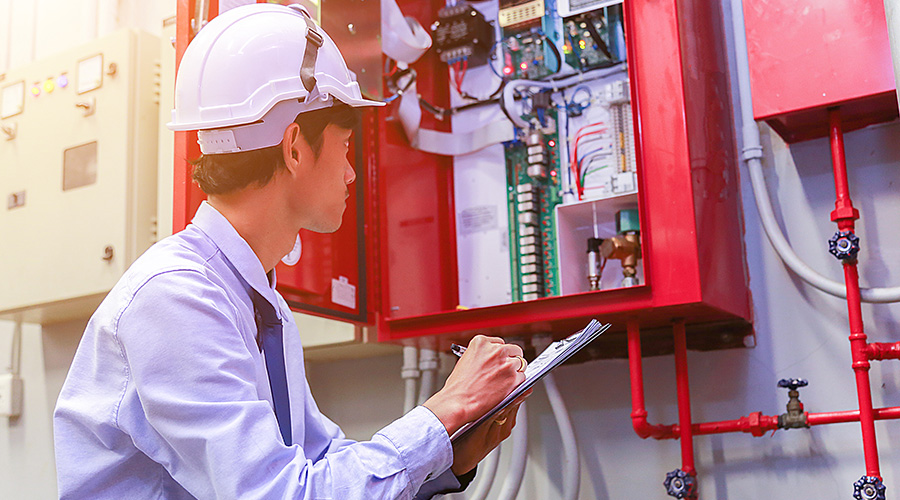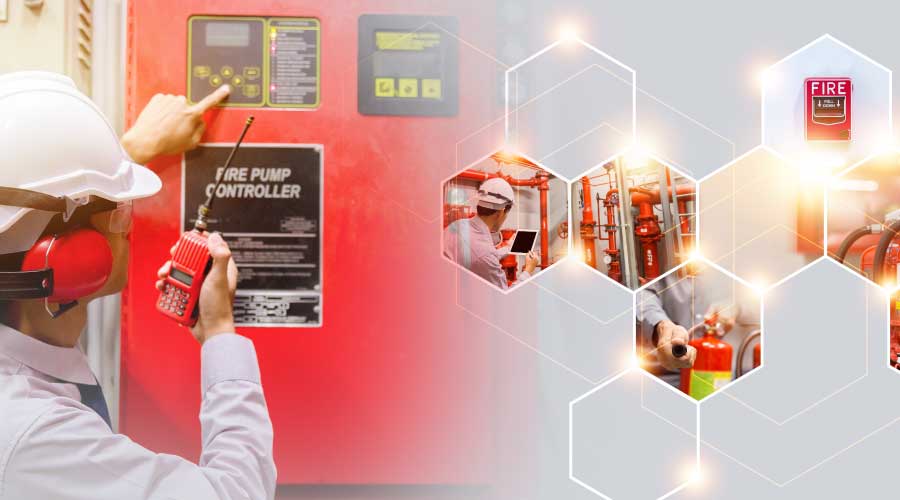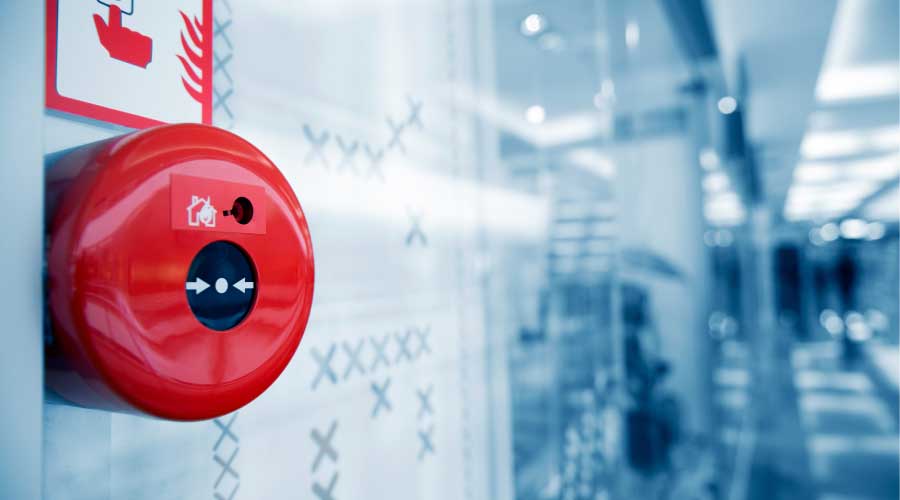Making Fire Protection Work
Comprehensive maintenance ensures that these often-overlooked systems perform as designed when an emergency strikes
As with other building systems, fire-safety systems require ongoing maintenance if they are to perform as intended when needed. But since fire-safety systems are not actively doing things on a regular basis, they are easy to overlook when identifying and scheduling maintenance.
Maintenance and engineering managers can improve the performance of their fire-safety systems by implementing a comprehensive maintenance program, which consists of regular inspections, testing and maintenance follow-up when deficiencies are discovered.
To assist in establishing these programs, managers can make use of a number of codes and standards, including the National Fire Protection Association’s code, NFPA 72. This standard identifies requirements for the installation, performance, testing, inspection and maintenance of fire alarm systems.
The components discussed here are not the only ones that must be maintained in the fire-protection system. But by starting with these components, managers can build the foundation for a comprehensive program.
Water Supply
One critical and overlooked element in a building’s fire-protection system is its water supply. Sophisticated detection systems and advanced sprinkler systems can be negated by something as simple as a valve on the water supply accidentally left in the closed position.
Inspect valves monthly on the water supply system. Valves should be locked in the open position. At the same time, inspect tamper switches to ensure they have not been “jumpered” out. Frequently, maintenance personnel bypass tamper switches to prevent false alarms when they work on the system, only to forget to remove the jumper when work is done.
At least annually, valves should be exercised from full open to full closed, then back to full open to ensure proper operation. The condition of packing glands should be inspected. Backflow preventers should be inspected at least once every five years.
If buildings with standpipe systems, the system should be inspected once every year for damage to piping and the threads at any connection. All caps should be tightly in place. Inspect each connection for debris.
Engine-driven Fire Pumps
To boost water pressure and ensure an adequate flow rate, high-rise facilities frequently make use of natural-gas or diesel-fueled fire pumps. Like their engine-driven standby electrical generator counterparts, fire pumps sit idle for long periods of time. If they are to operate when needed, these pumps must receive regular maintenance.
At least once each month, the pump’s engine should be operated for at least 30 minutes. This operation allows the engine to reach normal operating temperatures, thus testing all system components.
One of the most critical and prone-to-fail components in engine-driven fire pumps is the battery used to start the engine. Due to infrequent use, it is difficult to maintain the battery’s charge. So, in addition to exercising of the engine monthly, the battery and its charging system should be tested every two weeks. As part of that biweekly testing, closely inspect electrical connections for tightness and corrosion.
If the engine is diesel fueled, the fuel level in the storage tank should be inspected at the end of each monthly run. At least once every six months, fuel should be tested for water contamination. If the engine operates where winter temperatures frequently fall below 40 degrees, test engine block heaters for proper operation before winter, and add stabilizers to the diesel fuel.
Besides these items, follow the manufacturer’s maintenance requirements for such items as oil changes and testing of engine alarms and safeties.
Dry and Wet Sprinkler Systems
Dry-pipe sprinkler systems are most widely used in applications where a large portion of the sprinkler piping is subjected to freezing conditions. Once a year, before heating season, inspect the piping system and hangers.
Drain low points in the piping to remove condensation from the system. Higher-than-normal volumes of water that require draining are signs of system leaks that must be repaired before the heating season.
Wet-pipe sprinkler systems, most frequently used in areas not subject to frequent low temperatures, are not immune to the effects of freezing. Sprinkler piping might run through roof and attic areas, high bays, or in areas close to skylights and window openings, where temperatures can be low enough to freeze water in the pipes.
Before heating system, these areas should be closely inspected and steps taken to minimize the effects of low temperatures. If piping is protected by thermostatically controlled electrical heat tape, the thermostatic control and the heat tape should be tested for proper operation.
In dry and wet systems, piping and hangers should be inspected annually to ensure their integrity. Sprinkler heads should be inspected for corrosion, leakage, damage or dirty buildup. More frequent inspections should be performed if an area has been renovated or painted.
Smoke Dampers
Of all the components that make up a fire-protection system, fire dampers are the most difficult to maintain. Located within HVAC system ductwork, these dampers prevent the spread of fire and smoke to other portions of the building through the HVAC system.
NFPA 90A requires that fire dampers must be operated prior to building occupancy. Yet random checks of many facilities show that maintenance personnel cannot access to smoke dampers for inspection or testing. In many cases, the installer did not provide duct access panels.
The first step is identifying the location of smoke dampers. Duct access panels must be added where they have not been provided. Once smoke dampers have been located and the dampers made accessible, fire dampers should be inspected once each year. Verify that dampers are completely open by checking their position through the access door.
Check for bent or broken tracks, warped or lose dampers, and accumulated of dirt in the tracks and release mechanism. Make certain no fire damper has been permanently wired in the open position. With the alarm system deactivated, check the operation of the smoke damper to verify it is fully closed.
Upgrading for Performance
Like most other building systems, fire-protection systems have a finite service life. With proper maintenance, most systems should perform satisfactorily and cost-effectively for 15-20 years. But those installed in harsh environmental or service conditions will have significantly shorter service lives.
Also like most other building systems, fire-protection systems have advanced rapidly in recent years. Applications of new technology have led to enhanced features that have improved system performance, while making systems easier and less costly to maintain.
Many new-generation systems include software that can enhance maintenance operations, such as the ability to automatically test the sensitivity of detectors and initiate trouble signals if a detector becomes too contaminated with dirt to operate properly.
If a system is approaching the end of its expected service life or if managers experience a high level of maintenance on their existing systems, it is time to consider upgrading to the new generation of fire protection system. An upgrade will not eliminate the need for system maintenance, but it can improve maintenance effectiveness and reduce maintenance costs.
|
Related Topics:











